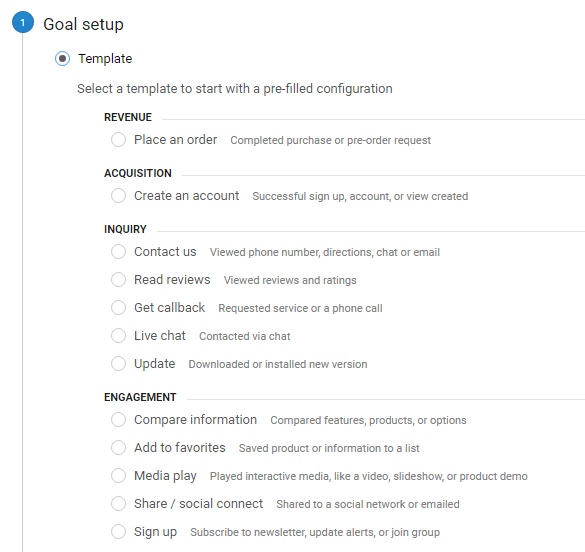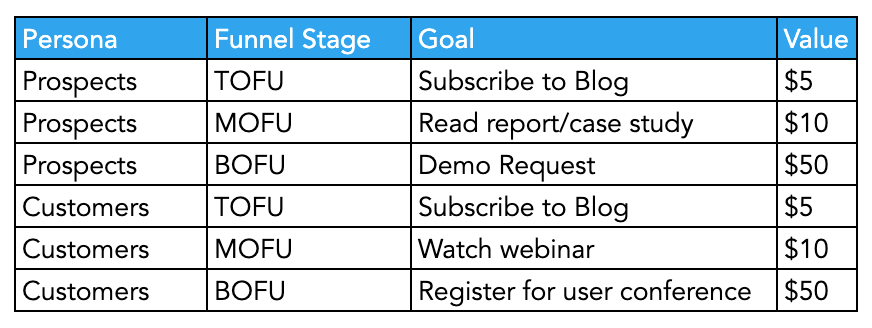What Data Is Google Analytics Goals Unable to Track: Critical Information
What Data Is Google Analytics Goals Unable to Track: Critical Information
Blog Article
Discover the Limitations of Google Analytics Goals: Unveiling the Data Kind That Remain Untrackable
As services progressively rely on data-driven decision-making, recognizing the constraints of devices like Google Analytics becomes extremely important. While Google Analytics Goals deal useful understandings into user communications, there exist data kinds that thwart monitoring, posing difficulties to a comprehensive understanding of user actions. These untrackable data types raise concerns about the accuracy and completeness of the analytics data that companies greatly rely upon for their electronic strategies. Curious to discover the hidden blind areas in your information analysis procedure?
Insufficient User Journey Tracking
Incomplete individual trip monitoring within Google Analytics can prevent the ability to precisely evaluate individual habits. When the customer journey is not fully tracked, there are spaces in the data that protect against an extensive understanding of how individuals communicate with a web site. This lack of insight can cause missed out on chances for optimization and enhancements to the customer experience.
One typical problem with incomplete individual journey tracking is the lack of ability to see the complete path that individuals take before completing an objective or leaving the site. Without this information, it is challenging to recognize where customers may be encountering obstacles or rubbing factors that avoid them from transforming. Additionally, insufficient tracking can obscure the influence of specific marketing efforts or website changes on customer habits.
To resolve this constraint, it is vital to set up appropriate monitoring mechanisms within Google Analytics to capture the entire customer trip. This might include setting up occasion tracking, goal funnels, or using tools like Google Tag Supervisor to ensure that no important communications go unrecorded. By acquiring an extensive view of the user journey, internet site proprietors can make even more educated choices to enhance user interaction and drive conversions.
Acknowledgment Difficulties
Navigating via acknowledgment challenges in Google Analytics calls for an extensive understanding of how various touchpoints add to the total conversion procedure. Acknowledgment difficulties develop from the complexity of modern-day client trips, where users engage with numerous channels prior to transforming. Google Analytics offers various acknowledgment designs like initial touch, last touch, and direct, each supplying a different perspective on just how credit scores is designated to touchpoints along the conversion course. These versions might not constantly precisely reflect the true effect of each touchpoint on the conversion.
One usual attribution obstacle is the problem in associating conversions to the correct resource, especially in instances where customers engage with numerous channels prior to converting. In addition, cross-device tracking presents another acknowledgment challenge, as users often change between devices throughout their trip, making it challenging to track their communications flawlessly.
Offline Conversions
Provided the obstacles associated with connecting conversions accurately in online networks, the dimension of offline conversions offers a substantial opportunity for marketers looking for an extra extensive understanding of their consumers' journey. Offline conversions describe activities that customers absorb the real world, such as making purchases in brick-and-mortar stores or over the phone, participating in events, or involving with printed materials - what data is google analytics goals unable to track. These conversions are important for organizations that operate both online and offline, as they supply beneficial understandings right into the efficiency of advertising campaigns throughout various touchpoints
Tracking offline conversions commonly positioned a significant difficulty for online marketers, as it was testing to connect these actions back to particular online communications properly. pop over to this web-site With innovations in modern technology, such as the combination of CRM systems, distinct identifiers, and voucher codes, businesses can currently link the gap in between online and offline data to acquire an extra alternative sight of customer actions. By properly measuring offline conversions, marketing experts can maximize their strategies, allot sources a lot more effectively, and eventually improve the general consumer experience.
Cross-Device Monitoring
Cross-device tracking plays an important role in comprehending the interconnected nature of consumers' electronic interactions throughout multiple devices. In read today's omnichannel globe, where users flawlessly switch over between tablet computers, smartphones, and desktops, tracking their actions throughout these devices is important for marketers to get an extensive sight of their customer journey.

Additionally, privacy problems and policies such as GDPR and CCPA have even more complex cross-device tracking. With individuals requiring even more control over their information and raised constraints on tracking technologies, online marketers must discover ingenious and privacy-compliant ways to link customer communications throughout tools.
Dynamic Material Involvement
Recognizing individual interaction with vibrant web content is essential in enhancing electronic advertising and marketing approaches for boosted target market communication. Dynamic material refers to website components that transform based upon individual habits, choices, or other factors, offering a tailored experience. However, tracking user interactions with vibrant web content presents difficulties for typical analytics devices like Google Analytics.
While Google Analytics can track standard communications like clicks and check out here page views, it might struggle to catch even more nuanced involvements within dynamic web content. what data is google analytics goals unable to track. Metrics such as time invested on specific vibrant components, hover activities, or communications within pop-ups are commonly not quickly measurable utilizing common monitoring approaches. This restriction prevents marketing experts' ability to totally realize how individuals are engaging with vibrant content and customize their methods as necessary

Verdict
To conclude, Google Analytics goals have restrictions in tracking incomplete user trips, attributing conversions properly, capturing offline conversions, tracking cross-device interactions, and determining vibrant web content engagement. These constraints highlight the significance of discovering extra monitoring techniques and devices to get a much more detailed understanding of user actions and conversions past what Google Analytics can provide.
While Google Analytics Goals deal beneficial understandings right into individual communications, there exist data kinds that thwart monitoring, presenting challenges to an extensive understanding of user actions.Insufficient customer journey tracking within Google Analytics can impede the capacity to accurately assess customer habits. When the customer trip is not completely tracked, there are voids in the information that protect against a thorough understanding of exactly how users interact with a web site.One common issue with insufficient individual trip tracking is the inability to see the complete course that customers take previously completing an objective or leaving the site. By gaining an extensive sight of the user journey, website proprietors can make more enlightened choices to improve user involvement and drive conversions.
Report this page